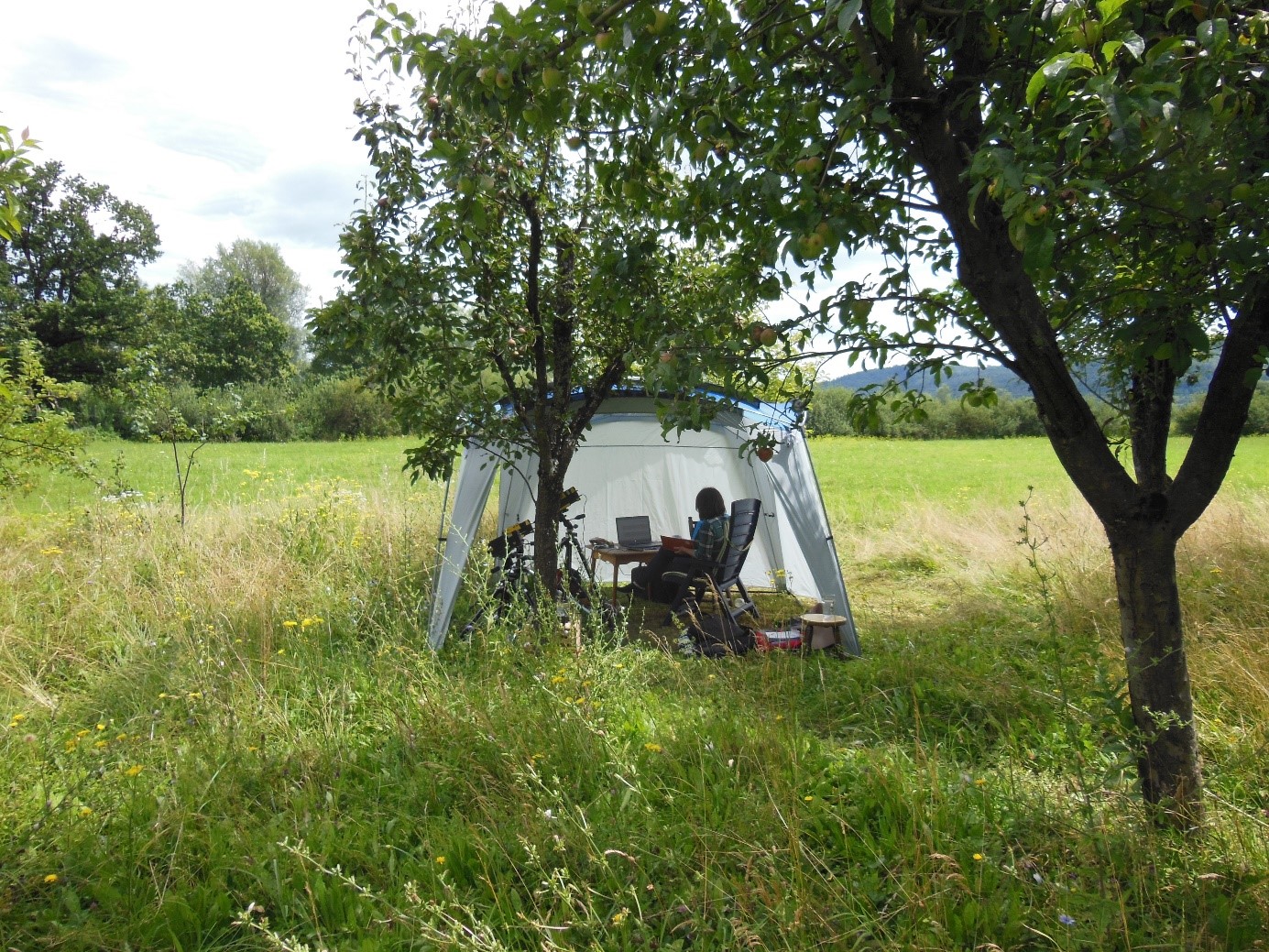20
Sep
Vibroscape – discovering an overlooked world of vibrational communication
Vibroscape – discovering an overlooked world of vibrational communication
Speech (communication via mechanical waves transmitted through the air, i.e. sound) is one of the most important elements of human interactions and our hearing allows us to perceive most of sounds emitted by animals. Humans are highly tuned to our acoustic environment (soundscape) and can envisage an environment with closed eyes just by listening to the sounds emanating from it. We are also constantly amazed and inspired by unknown soundscapes in inaccessible environments like the deep ocean. However, we are completely unaware that all around us there is also world of vibrations (mechanical waves transmitted through solid medium, i.e. substrate) which is hidden to human senses.
We can eavesdrop on this vibratory world with specialized equipment. Researchers from the Department of Organisms and Ecosystems Research at the National Institute of biology (Ljubljana, Slovenia) brought their laser vibrometers to a hay meadow and in their research published in iScience they opened a window into this overlooked natural world. They showed that this natural vibrational environment (vibroscape) is rich in so far unknown vibrational signals, emitted primarily by arthropods communicating with each other, as well as highly complex.
In summer, vibroscape was occupied by insect vibrational signals and on a single plant up to 30 different vibrational signals could be recorded daily. Communication space is also a resource shared by species living together and divided in order to avoid interference. On a hay meadow insects partitioned vibrational space in time. Species only rarely 'talked over each other' and usually alternated the signalling. Vibrational signals overlapped in time primarily when they differed in frequency.
Peggy Hill, a professor from Tulsa University, welcomed the research.
»Šturm et al.'s highly readable and informative recent article in iScience reports on the findings of a pioneering study of the ecological context of vibrational communication -- the vibroscape -- for the first time. The importance of recording and analyzing the rich and varied signals and cues carried as non-sound mechanical waves cannot be overstated. We have learned so much about natural community interactions through studies of the soundscape, but this first vibroscape study allows us to now include the millions of arthropods that interact with their environments almost exclusively through non-sound vibrations that can be detected in their vibroscape. The figures are not only organized to provide the maximum possible information to the reader on the detailed, highly complex experiments performed, but they are exceptionally beautiful and visually appealing. This paper is a must read!«
Vibrational communication is used by over 240.000 animal species, spanning invertebrates and vertebrates. Substrate vibrations are perceived by the majority of animals and the vibroscape provides crucial information, not only for animals relying on them in communication, but also to those only eavesdropping on other species and exploiting their signals. Discipline studying vibrational interactions is biotremology. The research group at the National Institute of Biology is one of the leading groups in this field and this vibroscape study for the first time reveals this hidden world and highlights the importance of vibroscape to communities and ecosystems has so far been ‘out of sight, out of mind’.
»Now, in time of climate and biodiversity crisis, this world which is hidden to us, but is crucial to survival of arthropods, is also likely to be rapidly changing with unpredictable consequences, without our notice«, said Rok Šturm, the lead author.
»We hope that this first vibroscape study will not only encourage other researchers, but will also change our perception of the world around us, added Assoc. Prof. Dr. Meta Virant-Doberlet, the coordinator of the study.
Citation: Šturm, R., Rexhepi, B., López Díez, J.J., Blejec, A., Polajnar, J., Sueur, J., Virant-Doberlet, M., Hay-meadow vibroscape and interactions within insect vibrational community, iScience (2021), doi: https://doi.org/10.1016/j.isci.2021.103070.
Additional information: Rok Šturm, This email address is being protected from spambots. You need JavaScript enabled to view it., Dr. Jernej Polajnar, This email address is being protected from spambots. You need JavaScript enabled to view it., Assoc. Prof. Dr. Meta Virant-Doberlet, This email address is being protected from spambots. You need JavaScript enabled to view it., Katja Sinur, This email address is being protected from spambots. You need JavaScript enabled to view it. .

Recording hay meadow vibroscape with laser vibrometers. Photo: Rok Šturm





